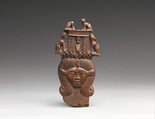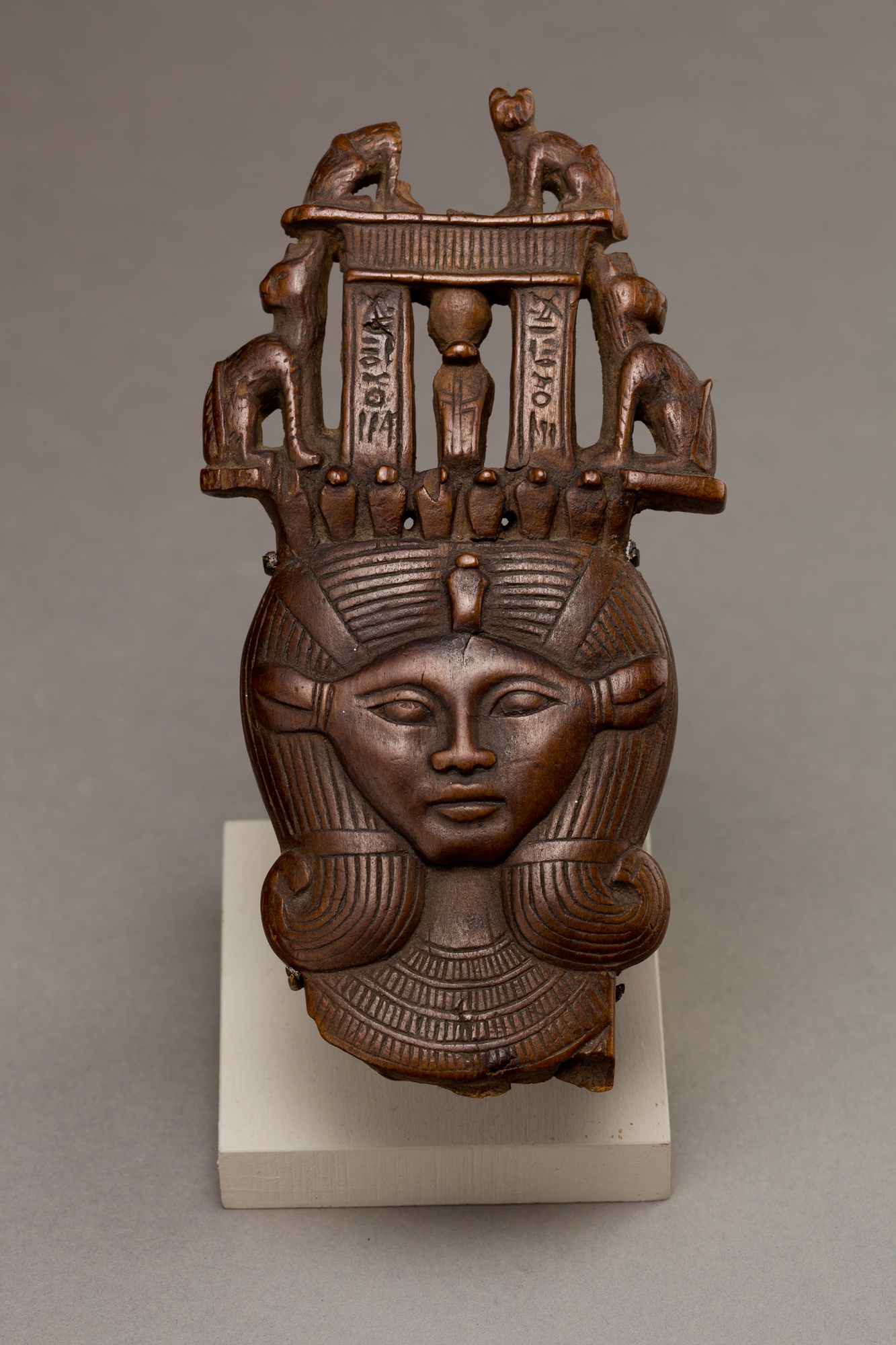Head of Hathor from a clapper the inscription calling the musician who used it "beloved by the goddess Mut , Lady of Isheru (Karnak)
New Kingdom, Ramesside–Third Intermediate Period
On this element is the emblem of Hathor, the goddess head wearing a modius of uraei topped by an naos with a uraeus. Inscribed on each jamb of the naos is the phrase "Beloved of Mut, mistress of Isheru," referring to the owner of the object, probably a priestess in Mut’s temple. Sitting at the sides and on top of the naos are four cats. Doubles of cats are closely associated with Mut, probably representing Re and his daughter who do battle with the serpent Apopy in the afterworld; more generally cats may represented the pacified lioness who is emblematic of the great female goddesses..
This piece appears to be upper part of a clapper – a long flat blade would have originally extended below the ornamental top. It would have been played against a second clapper to beat time for dance. Clappers were accompaniment at vintage or harvest, and for secular and religious dances.
The Isheru at Karnak is Mut’s sacred lake alongside her temple; there the goddess went boating at festivals. Exuberant dance would have taken place at such festivals, and also probably in connection with the Mut temple’s Porch of Drunkenness where a festival of drunkenness was celebrated as part of the Beautiful Festival of the Valley and seen as an occasion of transcendent experience.
Due to rights restrictions, this image cannot be enlarged, viewed at full screen, or downloaded.
This artwork is meant to be viewed from right to left. Scroll left to view more.



